Engineering Science Work Panel
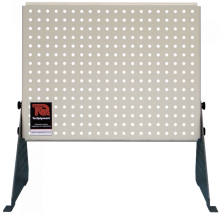
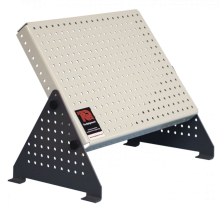
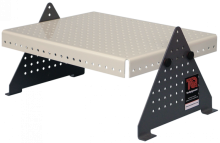
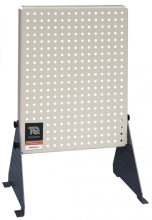
Multi-position Work Panel for use with TecQuipment’s Engineering Science kits.
TecQuipment's Simple Machines Kit Package (ESB3 - Package) contains one of the Pulley, Drive Systems, Gear Trains and Centrifugal Force Kits, plus four Work Panels (ES1).
Demonstrates the mechanical advantage of different combinations of pulleys and a simple wheel and axle. (See video)
The kit includes a unique pulley - the Weston Differential pulley to show how two different size sheaves on one pulley has a dramatic effect on mechanical advantage. The kit introduces students to key engineering terms such as machine efficiency, velocity ratio, and ‘work done’.
This kit also includes a wheel and axle with single, double, and triple wheel or ‘sheave’ pulleys for experiments in mechanical advantage.
Students test fixed, movable, and compound pulleys attached to load and effort weights to test their mechanical advantage.
Demonstrates the advantages and disadvantages of three popular drive systems: belt, chain and a universal coupling, using a manually rotated frame with a low friction cantilever linkage, adjustable masses, and a spring to apply force.
This kit includes three different drive systems to show their relative advantages and disadvantages. The kit includes extra parts to help show the importance of the angle of lap around a pulley and its relationship with friction.
The kit introduces students to key engineering terms such as gear ratio, pulley ratio, and efficiency.
Students test a universal coupling, a belt drive, and a chain drive to see how they work and how they differ in the way they transfer motion (power).
Demonstrates the characteristics of a spur gear, bevel gear and a worm drive.
This kit includes a selection of different gears for experiments to find their unique characteristics. The gears include Spur Gears, a Bevel Gear, and a Worm Drive. The spur gears have two sets of teeth on the same shaft, allowing extra experiments in compound gear trains.
Students test each set of gears to see how it works and note the differences in characteristics (such as efficiency, gear ratio, and mechanical advantage) of each set. The gear sets are a selection of the most common sets similar to those used in real applications, such as automobile gearboxes, domestic and industrial hand tools, and clockwork instruments. Each has advantages and disadvantages that make them suitable for a particular job.
The kit introduces students to key engineering terms such as gear ratio, efficiency, mechanical advantage, and velocity ratio.
Demonstrates the relationship between centrifugal force, radius and velocity of rotating masses.
This kit includes a manually rotated frame with a low friction cantilever linkage. The frame has mounting positions for adjustable masses and a spring that applies a fixed frictional force value to a rotating drum. The range of mounting positions and masses allows many variations of the experiment to help students understand the relationships between the variables of speed, mass, and radial position.
The kit introduces students to key engineering terms such as centrifugal and centripetal force, while explaining the fictitious term ‘centrifugal’ force and its accepted use. It also shows the use of ‘radians’ in rotational velocity measurement.
Students fit the chosen masses to one side of the frame and an equal counterbalance to the opposite side of the frame. They rotate the assembly which will overcome the spring frictional force at a given speed, working as centrifugal clutch that regulates its speed. The frame has a durable ‘clicking’ tab that students use with a stopwatch (supplied) to measure the speed. They use their measurements to calculate the forces due to the rotating masses and compare them with the opposing force from the spring.
These versatile kits is part of a series that allows many experiments using different arrangements of their parts. Students, teachers or lecturers fit the parts of the kit to the Work Panel (ES1) (supplied separately) to study or show an engineering science topic.
TecQuipment supplies a CD-ROM with the Work Panel (ES1). It includes all the worksheets, guidance notes, and lecturer notes (with answers) needed for typical experiments with each kit. The selection of parts in the kits and the choice of fixing points on the Work Panel means that teachers or lecturers may extend the experiments to an even greater range.




Multi-position Work Panel for use with TecQuipment’s Engineering Science kits.
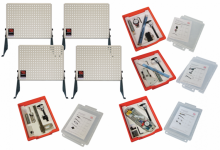
Contains one of each of the Deflection of Beams, Torsion of Circular Sections, Tensile Tester and Spring Tester Kits, plus four Work Panels (ES1).
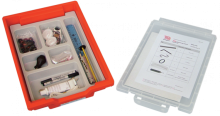
A kit containing commonly required spare items for the TecQuipment Engineering Science kits.
